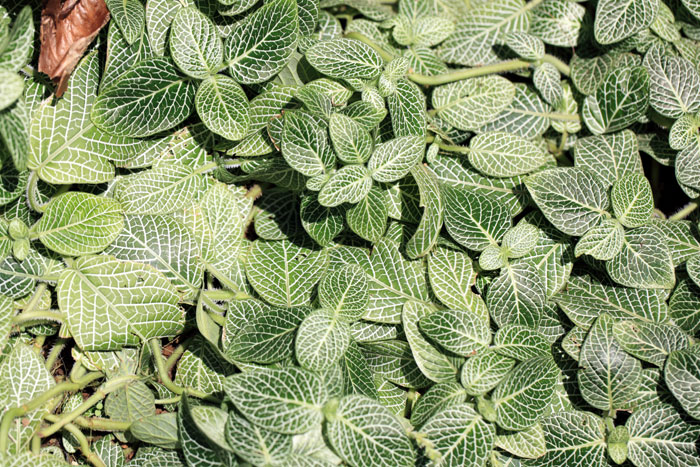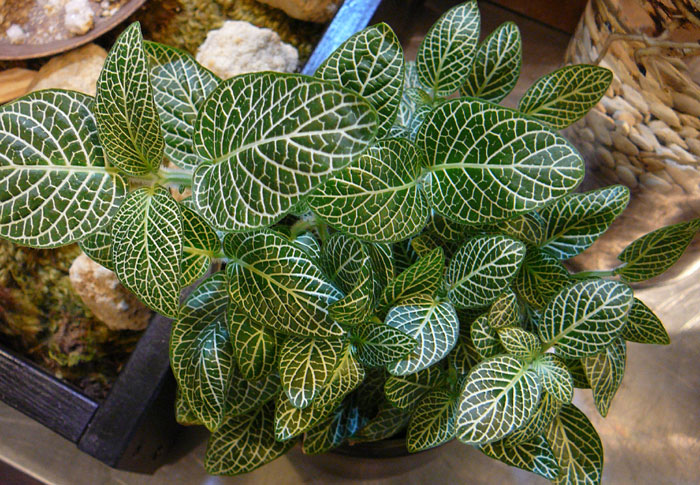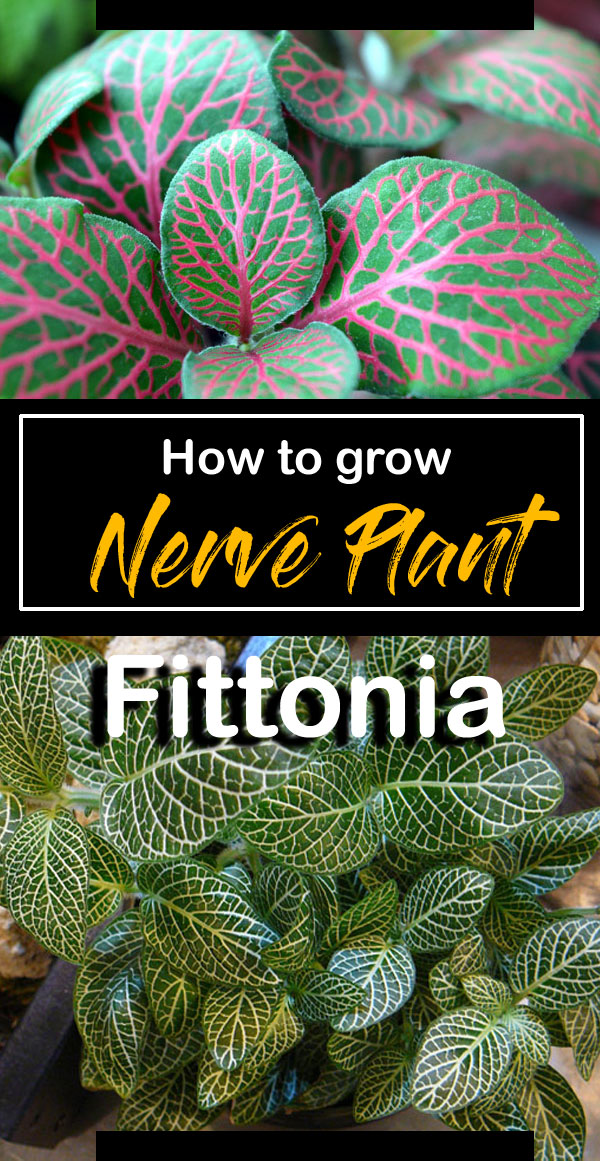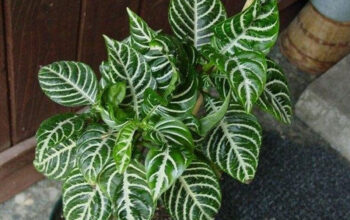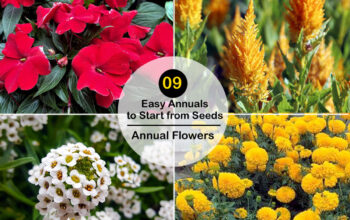Fittonia (Nerve Plant)
Know-How to grow Nerve Plant, Growing and caring Fittonia plant, Pest, and diseases, painted leaf nets care in this article. Nerve Plant is usually a popular houseplant, which is grown in hanging baskets, containers, or terrariums. Mosaic plants are native to tropical rainforests area, but also survive in the same conditions as rainforests. Fittonia plants are also known as mosaic plants or painted leaf nets. This evergreen plant has dense, dark green leaves, which contain veins in pink, white, and green.
This plant is mainly native to Peru. Fittonia has veined leaves and has a trailing habit, which keeps them on the hanging baskets or on the edges of the container. It is a tropical plant and hardy for Zone 11 only, in most areas people grow it as a houseplant. 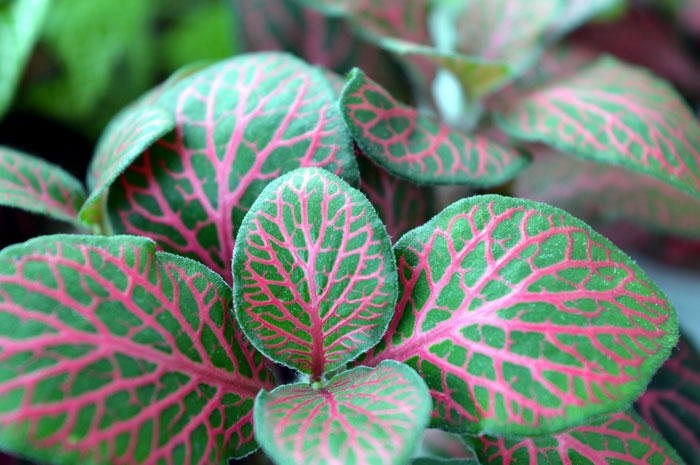
How to Grow Nerve Plant
Overview Fittonia Plant
Scientific name Fittonia spp.
Common name Nerve Plant, mosaic plants, painted leaf nets.
Plant type Houseplant
Sun requires Filtered sun or Part shade
Blooming time July to August
Soil Moist and well-drained soil
Soil pH 3.0-5.0
Zone 11-12
Common names
It is commonly known as ‘Mosaic Plant’ or ‘Nerve Plant’. Fitttonia is made up of the pronunciation of the word (fit-tone-a-a), it has two species, 1. Large leaf fittonia, which is called superba, painted leaf nets, and small fittonia verschaffeltii. The name of this plant was named after the pair of Irish botanists Elizabeth and Sarah Mary Fitton in the 19th century. Read more.
Habitat mosaic plants
Nerve Plants is native to South-American rainforests, mainly found in Peru. Therefore these plants are grown in more temperate regions. Nerve Plants do not thrive in places with frosty weather, arid temperatures, and direct sunspaces.
How to Grow Nerve Plant
Soil and location
Nerve Plant Pouting Grows well in the peat-moss base with potting soil. Although they prefer moist soil, they should be well-drained.
Fittonia likes the presence of indirect light. Because nerve plants are native to tropical rainforests area, direct sunlight is blocked by trees. Therefore, Fittonia does not like the presence of the rigid sun. Therefore, for this, you have the proper location of the northern window of your house.
Although it can tolerate a small amount of sun, you should have a translucent curtain to protect the light and to prevent the burning of leaves.
Propagation Fittonia
Leaf-tip cutting can easily propagate the plant of fittonia. Take leaf-tip cuts in the late spring or early summer, and at the same time, you re-pot it. For better results leave at least two mounting nodes on the cutting. When planting it in a potting mixture you can expect its roots to come within 2 to 3 weeks.
Watering
Mosaic plants prefer moisture. Water it well, as it is destroyed after drying. Lack of water will make the leaves yellow and limp.
Before watering the plant, place one finger on the soil surface, if the surface is dry to about 0.5 cm, then watering should be done. Do not wet the soil because the plant does not like soggy soil.
Humidity
Like many houseplants, mosaic plants also love moisture. You can increase the humidity by weekly spray. This plant is the right choice for growing in the Terrarium because there the humidity level is naturally higher, the plant gets its advantage.
Temperature
Fittonia flourishes at around 70 degrees Fahrenheit. Since these plants are found in rainforests, therefore prefer Humid conditions, use regular misting. Like other tropical plants, they perform well at room temperature.
Fertilizer
During the growing season, fertilize your own fittonia plant once a month with the general all-purpose house plant fertilizer. It is good for plants’ growth and health. If you are unsure about the usage instructions of your fertilizer, you should use liquid fertilizer once a week or once every week with a weak dose.
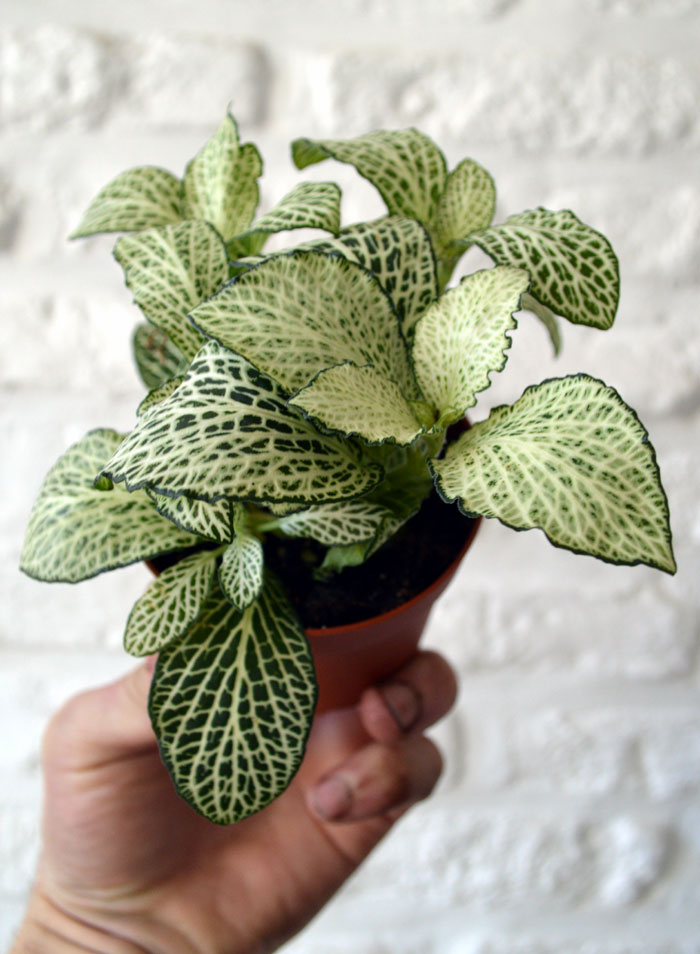
Planting Fittonia
Make necessary improvements in drainage, make sure you use drainage pots instead of closed utensils. Plants appreciate natural humidity, to increase the humidity keep a plate of water under the pot. This way moisture will not disappear quickly, they will perform well under steady conditions.
Pruning
Fittonia develops very rapidly if the desired environment, so the plants will remain bushy and dense by taking a pinch on the tips of leggy stems. Remove the spike of flowers, because its leaves seem attractive before. Flowers will not harm the plant, if desired, can leave it.
Pests and diseases Nerve plants
Insect problems of Nerve Plants include fungus Gants, Mealy Bugs, or aphids. Plants occur indoors, and the infection spreads rapidly, it can affect other plants. So treat immediately after infection.
In-house nerve plants usually do not have a pest problem. There are many similar problems that could affect other houseplants. Because of its yellow leaves or appear wilted is too much water. Reduce the amount of water immediately If the plant does not have enough water, it can fold or collapse. Lots of light or insufficient humidity can shrink your Fittonia’s leaves, immediately move your plant to shady areas.
Read also: House plants care tips. Growing Verbena in your garden. How to grow Mandevilla in containers. Growing Fuchsia plants in containers. Growing Kiwi fruits in your garden. Mulberry tree growing at home. Coriander Growing and care in containers. Plumeria growing and caring guide. Cantaloupe growing and care tips. how to grow Pansy flowers. Celery growing and care guide. Anthurium plant. Impatiens Growing indoors in your garden.
Happy gardening
For pin:

